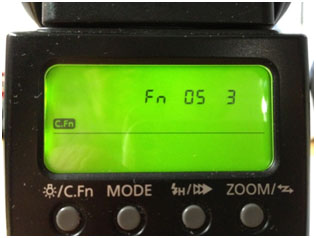Light painting with a small LED flashlight
Multiple captures using a Canon Speedlite 600EX from different positions then combined as layers in Photoshop
A history of light painting can be seen here:
http://lightpaintingphotography.com/light-painting-history/
NY Times Lens Blog on Harold Ross' work:
http://lens.blogs.nytimes.com/2012/01/05/with-light-sculpting-a-photograph/?_r=1
NY Times Lens Blog on Harold Ross' work:
http://lens.blogs.nytimes.com/2012/01/05/with-light-sculpting-a-photograph/?_r=1
Much of this work is done with the light source pointed at the camera and recording the light source as it travels. I want to concentrate on another aspect of light painting and that is lighting a subject with the use of a continuous light source such as a flashlight or even a cell phone. Along with this idea of light painting is the idea of using multiple pops of a flash that is moved to different positions throughout the exposure. Since digital photograph has made it easy to combine images with the use of layers, it is now practical to make a series of captures with the flash in different positions and combine them in layers. The easiest way is to use Lightroom, selecting the images you want to use in Library Grid Mode, right click and choose Edit In… Open as layers in Photoshop. Now each layer can be controlled separately with the use of masking and any of the adjustment tools.
To make an image using a continuous light you will need to keep the camera on a tripod and the shutter open. This discussion is for the Canon 5DMII. Set the exposure for a length of time that will allow you to paint the light on the subject and the background (30 seconds is the maximum time allowable). The room has to be dark enough that it doesn't pick up any stray light during the long exposure. The f stop and ISO are determined by trial and error. With practice a rhythm will develop and improve your painting skills.You can also use the Bulb setting but the shutter has to remain depressed during the entire exposure. You can use the Canon Remote Switch RS-80N3 to release the shutter and keep it open by exposing the red dot on the release handle. Slide the mechanism to close the shutter.
To make an image using a multiple flash image you are going to actually make multiple captures with each exposure having the flash in a new position. With the camera on a tripod and the flash in one hand you setup the remote exposure as outlined below. A special cable is needed which is outlined below.
Remote Camera Setup
We learned how to remotely trigger the 5D MII by using a special cable called the Canon N3 to mini phone by connecting the N3 side to the Canon's remote control terminal and the mini side to the Pocket Wizard II's camera port. By setting another Pocket Wizard Plus II to the same channel as the one attached to the camera, the camera shutter can be released by the remote Pocket Wizard Plus II when you press the test button remotely. We need a third Pocket Wizard Plus II to be attached to a Canon 580EXII (this is the only Canon flash with a pc connection) using a pc to mini cable. The pc end is inserted into the flash's pc terminal and the mini end is plugged into the 3rd Pocket Wizard Plus II's flash terminal. The 3rd Wizard has to be set on a channel that is one number higher than the other two Wizards. The 580EXII is set on External Manual Metering by using the custom function 5 option 3 as described below. Now we have the 580EXII and 3rd Pocket Wizard Plus II in one hand and the remote camera firing Pocket Wizard Plus II in the other. As we point the flash where we intend the light to land, we push the test button on the 1st Wizard and it trips the shutter and then automatically uses the pocket wizard mounded in the camera's hot shoe to sync with the flash and 3rd PocketWizard that is set on the next higher numbered channel. The subject needs to remain perfectly still and then as many captures from as many positions can be captured.
To use the flash on Manual External Metering you will need to set the custom function on the flash. There is a external reflected light sensor on the front of the 50EXII that will read the light where the flash is pointed. Press and hold the light symbol/C.Fn buttom for 2 seconds. Use the scroll wheel to find the #5 custom function and press the Sel/Set button and scroll down to #3 and press Sel/Set button again.
To set the ISO and f stop: Tap the SEL/SET button so that the ISO is blinking. Use the wheel to select your ISO then tap the SEL/SET button again to set it. Next tap the SEL/SET button twice so that the f stop is blinking. Use the wheel to select your f stop and tap the SEL/SET button again to set the f stop.










No comments:
Post a Comment